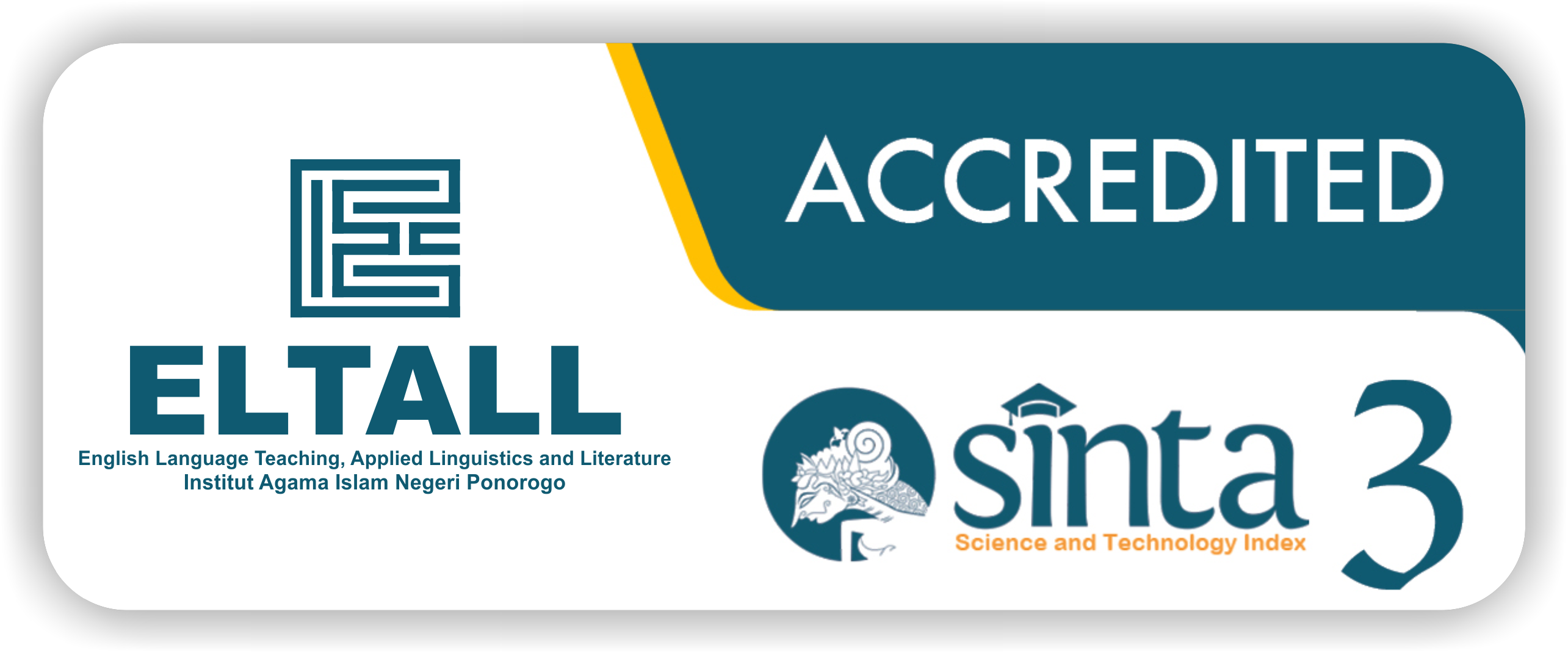Submissions
Submission Preparation Checklist
As part of the submission process, authors are required to check off their submission's compliance with all of the following items, and submissions may be returned to authors that do not adhere to these guidelines.- Articles submitted must be articles that have never been published or sent for publication anywhere. All articles submitted in the ELTALL Journal are written in English. The manuscript is typed in Ms. Word format on A-4 paper. The articles published in this journal include writing about the results of research in the field of English language. The manuscript is typed by paying attention to the rules regarding the use of standard language, signs reading and spelling based on the Enhanced Indonesian Spelling Guidelines.
- The submission file is in OpenOffice, Microsoft Word, RTF, or WordPerfect document file format.
- Where available, URLs for the references have been provided.
- The text is 1.15 space; uses a 12-point font; employs italics, rather than underlining (except with URL addresses); and all illustrations, figures, and tables are placed within the text at the appropriate points, rather than at the end.
- The text adheres to the stylistic and bibliographic requirements outlined in the Author Guidelines, which is found in About the Journal.
- If submitting to a peer-reviewed section of the journal, the instructions in Ensuring a Blind Review have been followed.
Copyright Notice
Authors who publish with this journal agree to the following terms:
-
Authors retain copyright and grant the journal the right of first publication, with the work licensed under a Creative Commons Attribution License, allowing others to share and adapt the work with appropriate credit to the authors and the journal.
-
Authors may distribute their published work through other media (e.g., institutional repositories or books), with proper acknowledgment of its original publication in this journal.
Privacy Statement
The names and email addresses entered in this journal site will be used exclusively for the stated purposes of this journal and will not be made available for any other purpose or to any other party.













